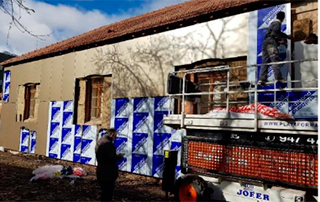| Issue |
E3S Web Conf.
Volume 172, 2020
12th Nordic Symposium on Building Physics (NSB 2020) |
|
|---|---|---|
| Article Number | 25001 | |
| Number of page(s) | 5 | |
| Section | Energy performance simulation and assessment | |
| DOI | https://doi.org/10.1051/e3sconf/202017225001 | |
| Published online | 30 June 2020 | |
roberto GARAY-MARTINEZ1, Beñat ARREGI1, Mikel LUMBRERAS1, Belén ZURRO2, Jose Manuel GONZALEZ2, Jose Luis HERNANDEZ3
1: Tecnalia, Spain; 2: Universidad de Burgos, Spain; 3: CARTIF, Spain
Abstract:
 In the last decades, a growing industry has been created in relation to building envelope retrofits. Linked to the lack of financial capacity of many building owners, innovative instruments such as energy performance contracts have been promoted by public bodies. This kind of instruments require of detailed energy assessment processes in order to define the expected heat load reduction and the associated economic flows between building owners and Energy Services Companies.
In the last decades, a growing industry has been created in relation to building envelope retrofits. Linked to the lack of financial capacity of many building owners, innovative instruments such as energy performance contracts have been promoted by public bodies. This kind of instruments require of detailed energy assessment processes in order to define the expected heat load reduction and the associated economic flows between building owners and Energy Services Companies.
When dealing with building envelopes, existing methods for building envelope heat loss characterization require of substantial efforts in terms of equipment and time, which makes them difficult to apply in real practice.
In this paper, a novel method is proposed based on whole-building heat load assessment by means of heat meters, and analytical calculations of building envelope transmission heat load coefficients. This method, which requires minimal or no additional equipment, can be used over historical data from District Heating systems. It assigns a specific load fraction to building envelope heat transfer and allows to assess the expected reduction due to the building envelope retrofit. Numerical and experimental data is presented based on an educational building in the city of Burgos, Spain.
